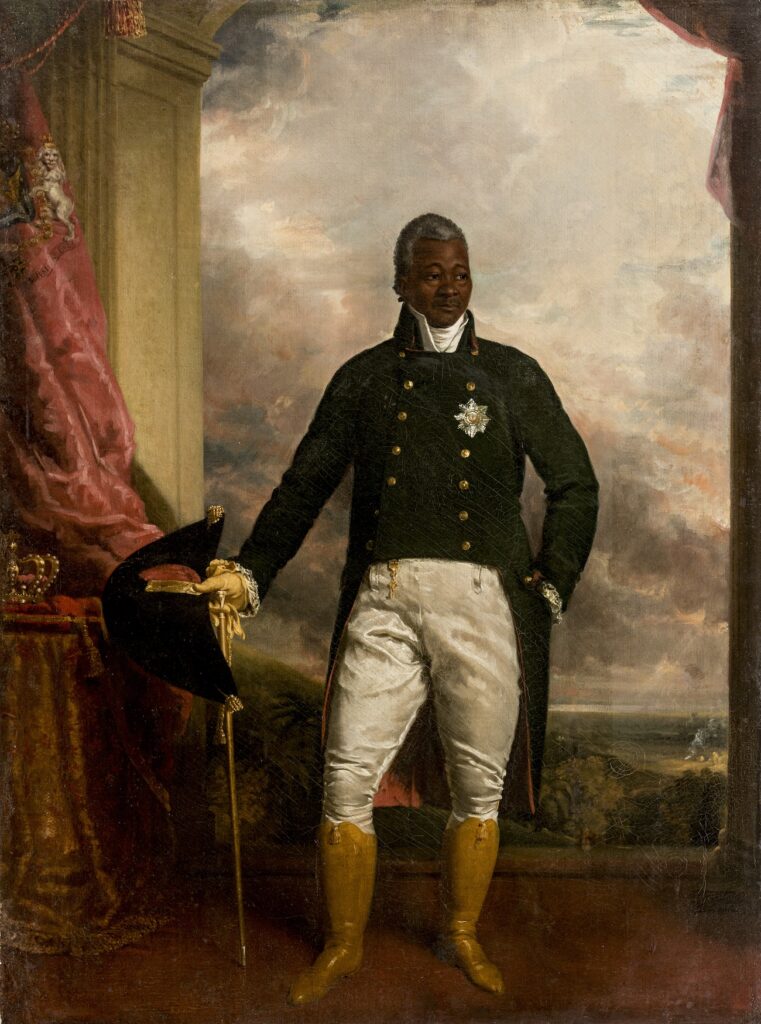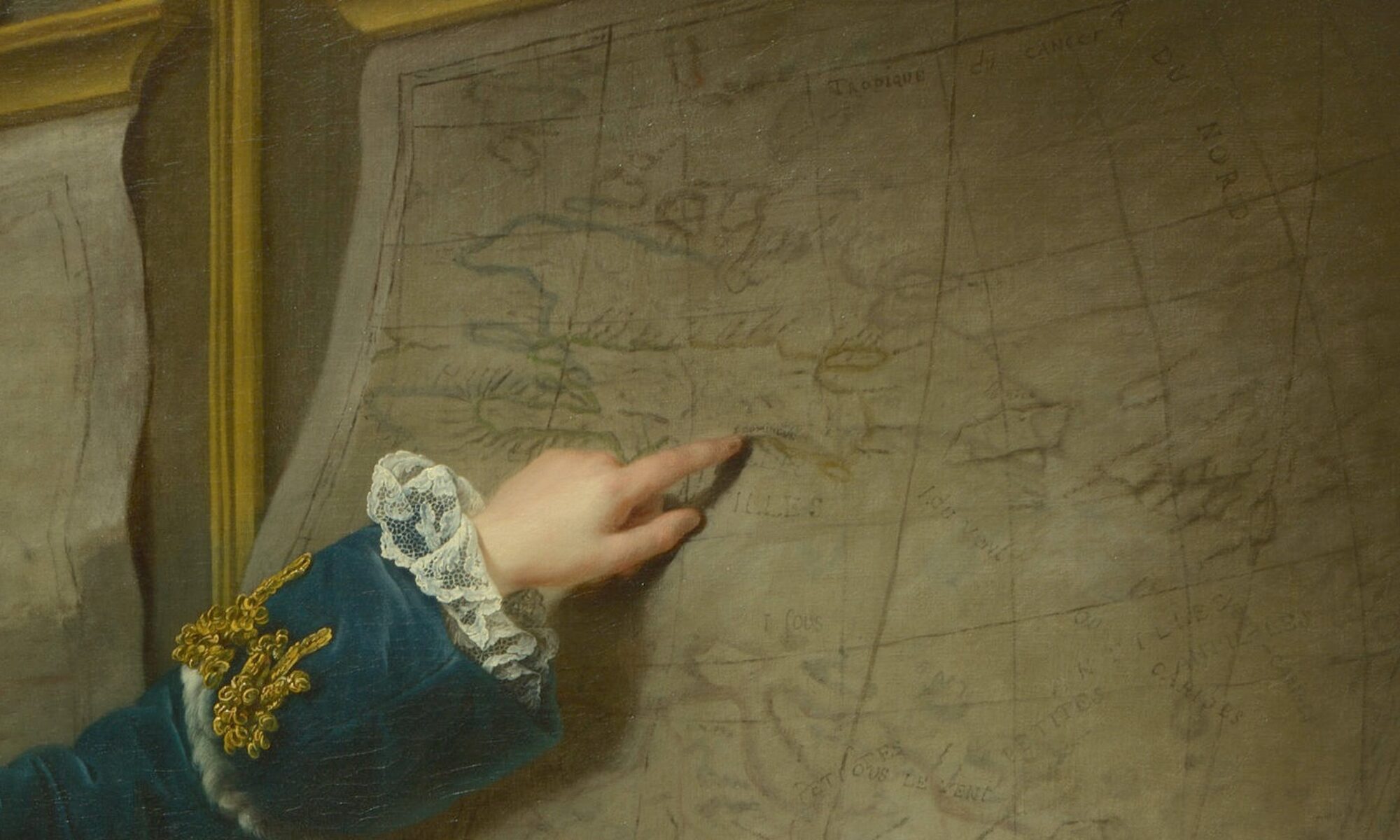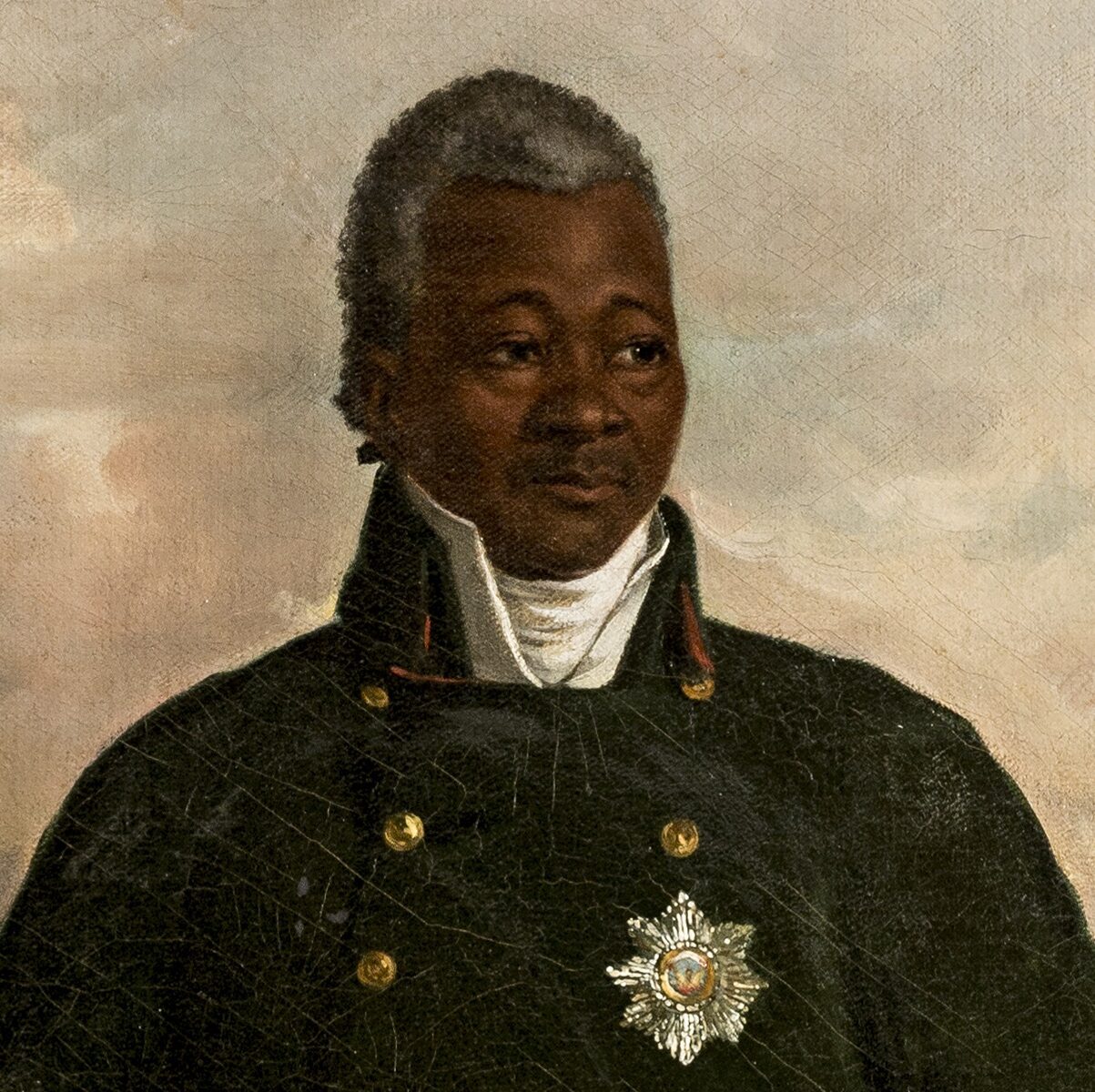Esther Chadwick (Courtauld Institute of Art)
On November 18, 1816, King Henry Christophe (1767-1820) wrote from his palace in the postrevolutionary Kingdom of Hayti to Thomas Clarkson, the British abolitionist, to announce the presence of a new art school: “Mr. Evans, the teacher of drawing and painting, is established at Sans Souci, and his school is also functioning.”[1] This detail is corroborated by a passage in Christophe’s official Gazette royale of October 1816—”Already an academy of drawing and painting is established in the town of Sans-Souci”—and by the entry in the Kingdom’s Almanach royal of 1817 for the “Académie de Dessin et de Peinture, établie à Sans-Souci,” underneath which is printed “M. Evans, professeur.”
The Academy of Drawing and Painting mentioned briefly in these sources was conceived as part of a raft of educational and cultural reforms implemented by Christophe over the course of his reign (1811-1820). Numerous national schools, academies and colleges, including a Royal Medical College, an Academy of Belles-Lettres, and a Royal Academy of Music, were founded in these years with the aim of diffusing knowledge among the Haitian people and (as Christophe put it in his letter to Clarkson) “extending moral principles as widely as possible.” Crucially, this programme of improvement was intended to demonstrate Haitian legitimacy on an international stage—a project in which the visual arts played a vital role.[2] For Henry Christophe, a former revolutionary general who had risen to power in the northern part of Haiti following the assassination of Jean-Jacques Dessalines in 1806, the education of his citizens and the flourishing of the arts were central not just in the civil war against Alexandre Pétion’s rival southern Republic but also to the larger project of Haitian independence and Black sovereignty after slavery.[3]

What is known about the art school itself? Christophe’s letter to Clarkson makes clear that the British artist Richard Evans played a leading role, describing the academy as “his school.” Evans (1783?-1871) had trained as an assistant and copyist in the studio of Britain’s leading Regency portraitist, Sir Thomas Lawrence (1769-1830). In 1815, he was officially admitted to the Royal Academy Schools in London, having attended the Royal Academy (RA) as a probationer for some time already.[4] The following year, Evans was recruited by Christophe’s agent in London, the African-American author and teacher Prince Sanders (or Saunders), who had been charged by Christophe to help staff his schools (and whose portrait Evans drew for the frontispiece of Haytian Papers in 1816). Evans arrived with Sanders at Cap Henry (formerly Cap-Français) on September 21, 1816, in the company of an agriculturalist and two schoolmasters who had also been appointed from England.[5] Shortly after his arrival, he set to work on royal portraits, including small-format full-lengths of Henry Christophe (Fig. 1) and his son, Prince Victor-Henry (Alfred Nemours Collection, University of Puerto Rico) which were sent as gifts to the abolitionist William Wilberforce and exhibited at the Royal Academy in London in 1818. Evans was reportedly offered a salary of 400 gourdes a month, or 24,000 francs a year.[6] Given Christophe’s desire to implement English as the language of instruction throughout the Kingdom, and his pointed reliance on British rather than French imports for the decoration and furnishing of his court, it is not surprising that he turned to an Englishman as the new Academy’s professor.
There are no known records of Evans’ day-to-day work in Haiti, how the art school functioned, or what exactly was taught. It has been said that Christophe’s model was the Académie de peinture et de sculpture in Paris.[7] But although Evans had recently visited the Louvre to copy paintings, the precedent freshest in his mind was surely London’s Royal Academy, where (as in France) students were required to progress from drawing after casts of antique sculpture to ‘life drawing’ of nude models. For artists at the Academy in London, however, the most hands-on instruction was typically provided in the studios of individual masters. It is possible that Evans ran the Haitian school more like a painting studio on the model of his own teacher, Lawrence. We can only speculate as to where the Academy might have been situated within Sans-Souci, Christophe’s magnificent neoclassical palace complex.
Thomas Madiou, the nineteenth-century Haitian historian, stated that Evans trained some good pupils (“d’assez bons élèves”), among whom one named Déjoie deserved special mention.[8] Was this Thimoléon Déjoie (1801-1865), who worked for President Boyer, Pétion’s successor in the south and ruler of the reunited Haiti after Christophe’s death in 1820? The Port-au-Prince born painter Xaviar Gazul (b. 1783) and Numa Desroches (1802-1880?) have also been linked to the Academy at Sans-Souci.[9] Another may be the Haitian illustrator of Charles Mackenzie’s Notes on Haiti (1830), “who owed all his instruction to the institutions of the king.”[10] There were other artists active in the Kingdom of Hayti during Evans’ tenure, but whether they had any involvement in the Academy of Drawing and Painting is unclear. The Haitian royal almanacs of 1814-16 record a group of “Peintres du Roi”: Revinchal, Frédéric Toucas, Baptiste, Manuël, Beaumy, Châtel, Bazile, and Charles. Toucas is also recorded as “dessinateur des decorations” for Christophe’s Théâtre Royal (and, in 1820, as an English language interpreter). Of the others in this group, little else is known, but the absence of second names suggests enslaved status before the Revolution.[11] When Evans enters the Almanac royal in 1817, Revinchal is listed as the sole “Peintre du Roi” (King’s Painter). Professor of the Academy and “Peintre du Roi” were evidently separate roles.
The Sans-Souci Academy appears to have been short-lived. No further mention is made of it in the Kingdom’s official publications after 1817. Echoes of its presence were felt later in the nineteenth century when President Fabre Geffrard (in office 1859-1867) founded a “School of Painting and Design” under the direction of Colbert Lochard, who had risen to prominence as the “Emperor’s Painter” under Faustin Souloque (1782-1867).[12]
Cite this post as: Esther Chadwick, “The Academy of Drawing and Painting at Sans Souci, 1816-17,” Colonial Networks (June 2025), www.colonialnetworks.org/?=840.
[1] Henry Christophe & Thomas Clarkson: A Correspondence, ed. Earl Leslie Griggs and Clifford H. Prator (University of California Press, 1952), 98. Original French (p. 276): “Mr Evans professeur de dessein & de peinture a été établi à Sans Soucy et son école est en activité.”
[2] See Tabitha McIntosh and Grégory Pierrot, “Capturing the Likeness of Henry I of Haiti (1805-1822),” Atlantic Studies 14, no. 2 (2017): 127-151; and Esther Chadwick, “The Aesthetics of Postrevolutionary Haiti: Currency, Kingship and Circum-Atlantic Numismatics,” Art History 46, no. 5 (November 2023): 1014-45.
[3] For Christophe see Marlene Daut, The First and Last King of Haiti: The Rise and Fall of Henry Christophe (Alfred A. Knopf, 2025); Paul Clammer, Black Crown: Henry Christophe, the Haitian Revolution, and the Caribbean’s Forgotten Kingdom (Hurst & Co, 2023); and Laurent Dubois, Haiti: The Aftershocks of History (Metropolitan Books, 2012).
[4] Martin Myrone, A Biographical Dictionary of Royal Academy Students, 1769-1830, ed. Gillian Forrester (Walpole Society, 2022), 177.
[5] Caledonian Mercury, January 30, 1817.
[6] Thomas Madiou, Histoire d’Haïti (Editions Henri Deschamps), vol. 5, 348.
[7] Gauvin Alexander Bailey, The Palace of Sans-Souci in Milot, Haiti (ca. 1806-1813): The Untold Story of the Potsdam of the Rainforest (Deutscher Kunstverlag, 2017), 27.
[8] Madiou, Histoire d’Haïti, vol. 5, 348.
[9] Clammer, Black Crown, 248-9.
[10] Charles Mackenzie, Notes on Haiti, made during a residence in that republic (London, 1830), vol. 1, 158.
[11] Michel-Philippe Lerebours, Bref regard sur deux siècles de peinture haïtienne (1804-2004) (Editions de l’Université d’État d’Haïti, 2018), n. 4, 23.
[12] Lerebours, Bref regard, 31.

